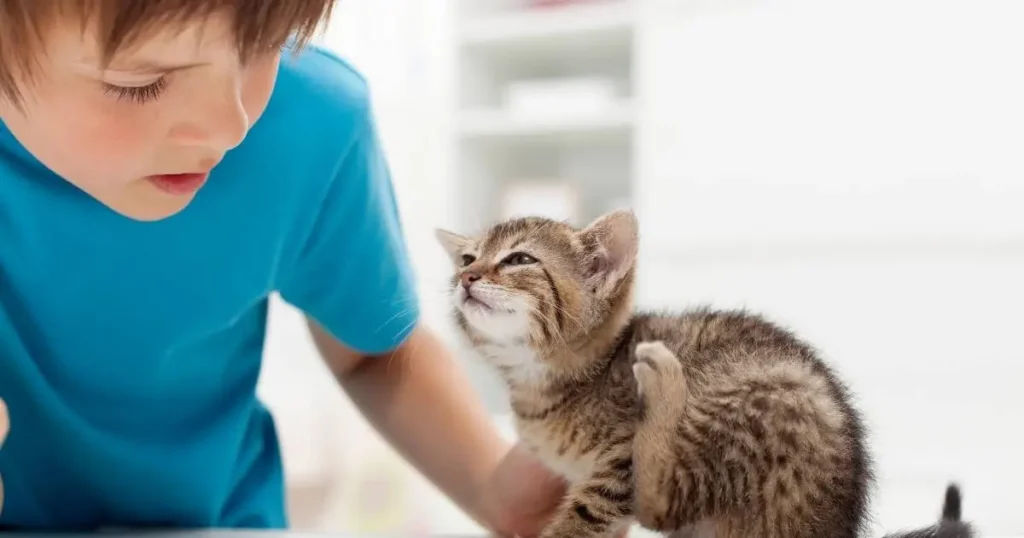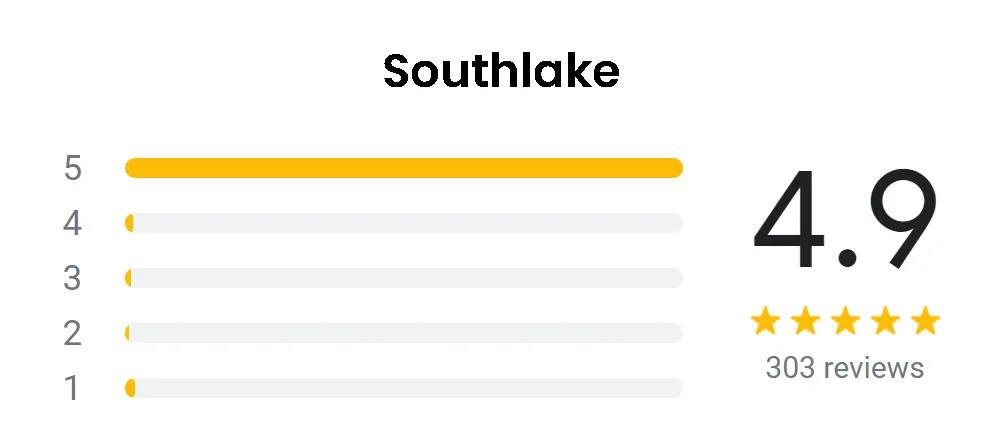
When it comes to keeping a home free from fleas while ensuring the safety of all its inhabitants, choosing the right flea spray is crucial. Effective flea spray for house safe for humans are designed to eliminate these pests without posing a risk to humans or pets, offering a balanced solution to a common household problem. The aim when choosing flea sprays is to find products that fit effortlessly into your daily routine, providing effective pest control while addressing safety concerns for both humans and pets.
Various flea sprays are specifically formulated to be safe for homes with dogs and cats, making them ideal for pet-friendly environments. These sprays target fleas at various life stages, including eggs, larvae, and adults—ensuring a comprehensive approach to managing infestations. Families can confidently use these sprays knowing that they are not only combating pests but also safeguarding their loved ones.
For pet owners, specific flea sprays cater to the needs of those with dogs or cats, meaning these products do not harm pets when used as directed. With the help of flea spray for house safe for humans and pets, homeowners can effectively control flea infestations while maintaining a comfortable and safe living space for everyone involved.

To effectively control fleas, it's important to target every stage of their life cycle with thorough cleaning, treating pets with vet-approved flea preventatives, and using insecticides or professional services if necessary. Untreated flea infestations can lead to considerable discomfort and health risks for both pets and people in the home.
Fleas progress through a life cycle consisting of four stages: egg, larva, pupa, and adult. This cycle can range from two weeks to several months, depending on environmental factors such as humidity and temperature. Adult fleas feed on the blood of hosts, typically pets, but can also bite humans.
Eggs are laid on the host and often fall into carpeting or bedding, where they hatch into larvae. After feeding adequately, the larvae form pupae by spinning themselves where they are protected inside a cocoon. When conditions are optimal, adults emerge from pupae, seeking out a host for nourishment. Interruption of this cycle is essential to controlling infestations and reducing risks to both humans and animals.
Fleas can lead to various health problems for both pets and humans. Pets may suffer from flea allergy dermatitis, leading to itching and discomfort. Serious infestations can result in significant blood loss, particularly dangerous for small animals. In addition, fleas are also responsible for transmitting diseases such as flea-borne typhus and parasites like tapeworms.
For humans, the bites can cause allergic reactions, characterized by itching and red welts. These specially formulated sprays provide protection against fleas while ensuring minimal exposure to harmful chemicals, making them ideal for households with sensitive individuals. These products typically contain ingredients that interrupt the flea life cycle without causing harmful side effects to humans or animals. Ensuring such products are part of a regular cleaning routine helps maintain a safe environment for everyone at home.
Choosing a flea spray for house safe for humans involves understanding the ingredients that ensure safety for humans while effectively dealing with pests. The formulations of flea sprays range from natural ingredients to chemical-based solutions, each designed to effectively target fleas while considering human and pet safety.
Flea sprays with natural ingredients often rely on essential oils like cedarwood, lemongrass, and peppermint, which are popular for their natural pest-repelling properties. Cedarwood oil works by disrupting fleas' pheromone systems, effectively inhibiting their ability to reproduce and reducing their population over time. This makes it a powerful natural tool for long-term flea control. Meanwhile, lemongrass and peppermint oils repel fleas with their strong scents and natural insecticidal properties, creating an inhospitable environment for fleas.
Vinegar is another common component, beneficial due to its acetic acid content that helps deter fleas.
Natural sprays typically avoid synthetic chemicals, reducing the risk of allergic reactions in humans. They are often preferred in households with children or pets due to their lower toxicity levels. While effective at repelling fleas, natural ingredients may require more frequent application than chemical-based options. It's important to check for any potential allergens even within natural ingredients.
Chemical-based flea sprays commonly contain substances like pyrethrins or permethrin, which are synthetic chemicals derived from chrysanthemum flowers, highly effective at killing fleas on contact. These chemicals work rapidly, often providing relief from flea infestations in a short amount of time, making them a popular choice for pet owners and homeowners dealing with severe flea problems.
Insect Growth Regulators (IGRs), such as methoprene or pyriproxyfen, prevent flea eggs from hatching, addressing the problem at the root.
While powerful, caution is advised to avoid inhalation or skin exposure, particularly in poorly ventilated areas. Reading product labels is essential to ensure their safety in homes, especially where vulnerable individuals are present. These chemical-based flea sprays offer longer-term protection by continuing to kill fleas even after the initial application. However, it's crucial to use them according to safety guidelines to minimize potential health risks. Overuse or improper application can lead to toxic exposure, especially for pets and small children.
When selecting a flea spray for house safe for humans, focus on finding formulations that effectively target fleas while ensuring safety for humans and pets in the home. Considering various factors such as effectiveness, method of application, and any safety precautions necessary for animals and infants.
The efficacy of a flea spray is determined by its active ingredients. Products containing insect growth regulators (IGRs) or adulticides are effective in breaking the flea life cycle. Sprays should quickly eliminate adult fleas and prevent further infestations.
Application methods vary. Some sprays come in aerosol cans, while others use trigger sprays. Ease of application is vital; consider how often the treatment needs to be applied and whether it can cover large areas effectively. Follow manufacturer instructions to ensure optimal performance.

Safety is paramount when using flea sprays in households with pets and children. Look for flea spray safe for pets, ensuring no harmful chemicals are included. It is crucial to check labels for specific safety certifications when selecting a flea spray.
Certifications such as "pet-safe" or "non-toxic" can provide reassurance, especially for homes with sensitive pets or young children. Some flea spray for house safe for humans are designed to be non-toxic and emit no harmful fumes, making them suitable for use around all family members. It's important to ventilate treated areas and follow all safety instructions to minimize exposure risks.
Proper use of flea sprays can effectively manage pest issues without compromising safety. It's crucial to adhere to recommended application techniques and consider what actions to take after using the spray.
Before applying flea spray, it’s essential to read the product label carefully. The label provides critical information on proper usage, including dosage, application areas, and any specific precautions. Only use flea spray for house safe for humans and pets. Ensure that all pets and food are removed from the application area.
Proper ventilation not only helps to dissipate any potentially harmful chemicals but also ensures the spray dries faster, making the space safer for pets and people to re-enter. This practice helps to maximize the spray’s effectiveness while prioritizing the safety of your household. When applying the spray, it's important to do so uniformly across surfaces where fleas are likely to hide, such as carpets, rugs, pet bedding, furniture, and baseboards. Regularly treating crevices and corners as part of your flea control strategy is key to maintaining a flea-free home.
Use gloves and masks to limit direct exposure during application. Avoid overuse, as repeated applications can lead to resistance in fleas. Excessive amounts can also increase health risks for both pets and humans. A strategic application based on the infestation level is often more effective.
After using a flea spray, wait the recommended time before re-entering the treated area. This waiting period ensures the effectiveness of the spray and minimizes exposure risks to humans and pets.
Once the area has been aired, clean surfaces that come into contact with skin or food. Pay close attention to children's play areas and kitchen countertops. Wash any fabrics or pet bedding that might have been exposed to remove residue.
Monitor the effectiveness post-application and consider supplemental flea control methods like regular vacuuming and flea traps to maintain a flea-free environment. Be mindful of symptoms of overexposure such as headaches or nausea, and seek medical advice if needed.

When choosing flea spray safe for babies, it's crucial to examine ingredients. Opt for non-toxic, natural formulas. Avoid sprays containing harsh chemicals like permethrin or organophosphates, as these can be harmful to young children.
Always make sure the area is well-ventilated when using flea spray. Open windows and doors to reduce the risk of inhaling fumes. It’s best to keep babies and children out of the room while the spray is being used and for a period afterward to allow the area to air out.
After using the spray, carefully clean all surfaces that children might come into contact with. This includes floors, play areas, and toys. Wash them with soap and water to eliminate any residue left from the spray.
Consider utilizing flea spray safe for babies. These products often explicitly list infant safety as a key feature. Checking for certifications or approvals can provide extra peace of mind.
Keep flea sprays and related products in a safe and secure place, preferably in a locked cabinet or on a closed shelf, out of reach of children and pets. Proper storage prevents accidental exposure and ingestion, ensuring the safety of all family members.
Using flea spray in a home with young children requires careful attention to safety practices. Be sure to carefully follow the manufacturer's instructions to ensure the proper and safe use of flea sprays and related products. If you're ever uncertain about the product's safety, especially in households with pets, children, or individuals with sensitivities, it’s advisable to consult a healthcare professional.

When using flea spray for house safe for cats, it’s essential to recognize harmful ingredients and choose products that are safe for cats.
Some ingredients in flea sprays can be dangerous to cats. Pyrethrins and pyrethroids, often found in dog flea treatments, can be toxic. Cats are sensitive to these substances, which can lead to adverse effects.
Another chemical to watch out for is permethrin, often found in dog flea sprays, which is harmful to cats. Symptoms of exposure include twitching, seizures, and even fatalities in severe cases. When choosing a flea spray, ensure it is labeled safe for cats and avoid using products intended solely for dogs.
Products specifically designed for cats offer a safer alternative. Flea and Tick Home Spray for Cats is a popular choice, formulated with feline-friendly ingredients. Always read labels to confirm a product is safe for cats.
Flea Spray Safe for Cats often utilize natural ingredients like lemongrass and cedar oil, which can effectively manage flea infestations without harming pets. These products are usually marked as non-toxic for both cats and humans, ensuring comprehensive safety. Always follow application instructions to maintain effectiveness while protecting your feline friend.
Effectively controlling flea infestations in households requires a multi-faceted approach. Focusing on Integrated Pest Management and considering Professional Extermination options are key strategies. These methods prioritize the safety of both humans and pets by ensuring that flea control is effective without posing unnecessary health risks.
Integrated Pest Management utilizes a combination of methods to effectively address flea problems. This method includes maintaining cleanliness, introducing natural flea predators, and using chemical treatments when necessary.
Regular vacuuming reduces flea populations by removing flea eggs and larvae. It's crucial to vacuum carpets, pet bedding, and upholstery frequently. Chemical treatments, like flea spray safe for dogs and cats, can be used to directly target and eliminate fleas. Be sure to choose options that are non-toxic to both humans and pets.
Biological control is another key aspect of Integrated Pest Management. Certain nematodes, which are natural predators of fleas, can be introduced into gardens to help reduce flea larvae outdoors. Combining these methods offers more effective flea management than relying on a single approach.

In cases where infestations are severe, professional extermination services may be necessary. Experts assess the severity of the issue and administer precise, targeted treatments accordingly. Professional services often use advanced products that can be more effective than those available to consumers. These services may involve the use of flea spray safe for dogs and cats, and the household, ensuring the health and safety of all inhabitants.
Critter Stop professionals are trained to tackle infestations that are challenging to control with over-the-counter products alone.
Contact us at (214) 234-2616 for efficient service and peace of mind. Selecting a trusted pest control provider is key to ensuring safe and effective flea elimination. Critter Stop is known for its outstanding reputation and positive online reviews, a result of high-quality work and exceptional customer service.
Effectively controlling fleas requires more than just using safe sprays; it also involves keeping a clean environment and utilizing natural deterrents. These measures help prevent fleas from returning, ensuring a safer space for both pets and humans.
Regular cleaning plays a crucial role in flea prevention. This includes vacuuming carpets and upholstered furniture regularly to remove flea eggs and larvae. Wash pet bedding frequently in hot water to effectively eliminate any remaining fleas, eggs, or larvae.
Apply flea spray for house pet safe in the areas they frequent, and if you have dogs, make sure the spray is specifically formulated for their safety. Regularly inspect and clean outdoor spaces where pets roam to reduce the risk of fleas re-entering the home.
It's recommended to invest in flea spray for house safe for cats specifically designed to combat fleas while being safe for pets. Products should be chosen based on their ingredients and effectiveness, ensuring safety for both pets and humans.
Natural deterrents can supplement maintenance efforts. Essential oils like lavender and lemon eucalyptus can act as natural repellents. They should be diluted appropriately before use and checked for pet safety to avoid any allergic reactions.
Planting flea-repellent plants such as mint and rosemary around your home can also help. These plants not only deter fleas but also add a pleasant aroma to the surroundings. Diatomaceous earth, a natural and non-toxic powder, can be an effective way to manage fleas without relying on harsh chemicals.
Combining these techniques creates a holistic approach to flea control, supporting the use of flea sprays while minimizing reliance on chemical treatments.
Selecting the appropriate flea spray safe for pets is crucial to safeguard the health of both humans and pets, considering whether you prefer a natural or chemical-based option. Effective flea repellents, suitable for direct application on furniture, can maintain a flea-free environment without posing risks to family members, including children.
Several flea sprays are designed for indoor use with non-toxic ingredients. When choosing a flea spray, it's important to look for products labeled as "safe for indoor use." and those that feature natural components, such as essential oils, which are generally safer for humans.
Natural flea repellents containing essential oils like citronella and lemongrass are often safe for human use while effectively deterring fleas. Always check the label to ensure the product is dermatologically tested, especially for those with sensitive skin.
Seek products explicitly indicated as pet-friendly. They often use natural ingredients like peppermint and clove oil that are non-toxic to animals. Performing a patch test on a small area before full application can help avoid potential adverse reactions.
Many sprays are designed for direct application to furniture and fabrics. Ensure they are marked as safe for such use. Options with minimal synthetic chemicals and those with certifications can provide additional peace of mind.
Opt for flea sprays with natural ingredients and zero harsh chemicals in areas used by children. Non-aerosol options are generally less likely to cause respiratory irritation and are more suitable for maintaining a child-safe environment.
Visit our Critter Library and learn more about our furry friends







